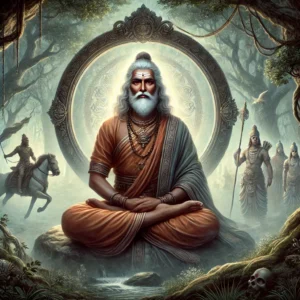
Kripacharya’s role as a warrior sage
Kripacharya: The Everlasting Warrior
Kripacharya, also known simply as Kripa, holds a unique and revered position in the Mahabharata, the great Indian epic. His life, deeply intertwined with the complexities of dharma (duty), neutrality, and wisdom, provides invaluable insights into the moral and ethical dilemmas faced during times of war and peace. His enduring presence before, during, and after the Kurukshetra War exemplifies the traits of an everlasting warrior—one whose legacy transcends the battlefield.
Early Life and Divine Origins
Kripacharya’s origins are as mystical as they are significant. Born to the sage Sharadvan and the celestial nymph Janapadi, Kripa and his sister Kripi were abandoned at birth due to their father’s ascetic duties. However, their fate took a turn when King Shantanu, while on a hunt, discovered the infants. Recognizing their divine heritage, Shantanu adopted them, ensuring they were raised in the royal court.
Kripa’s education was meticulous. He mastered the Vedas and excelled in martial arts under the guidance of his father. His sister Kripi later married Dronacharya, another pivotal figure in the Mahabharata. Together, Kripa and Drona played essential roles in shaping the future warriors of the Kuru dynasty, including the Pandavas and Kauravas.
Table of Contents
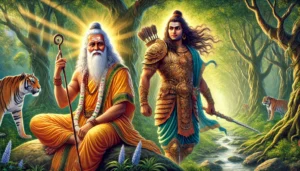
Kripacharya’s role as a warrior sage
Kripacharya’s Neutrality in the Kurukshetra War
Kripacharya’s position during the Kurukshetra War was one of the most complex and morally intriguing aspects of his character. Despite his allegiance to the Kauravas, his wisdom allowed him to perceive the larger moral canvas. Kripa’s neutrality wasn’t merely a passive stance but a conscious decision rooted in his deep understanding of dharma.
As the royal preceptor, Kripacharya was bound by his duty to the throne and the Kuru dynasty. Yet, he was also aware of the righteousness of the Pandavas’ cause. Unlike many warriors who were driven by personal grievances or blind loyalty, Kripa’s actions reflected a profound internal struggle. He fought for the Kauravas, but his heart often resonated with the principles upheld by the Pandavas.
Kripacharya’s impartiality is highlighted by his interactions with both sides. He counseled the Kauravas, urging them to seek peaceful resolutions and avoid unnecessary bloodshed. His presence on the battlefield was marked by his restraint and adherence to the rules of war, showcasing his deep respect for dharma even amidst the chaos of battle.
The Post-War Role and Guidance
After the catastrophic end of the Kurukshetra War, Kripacharya emerged as one of the few surviving warriors. His role in the post-war scenario was crucial in guiding the next generation and helping rebuild the war-torn society. With most of the Kuru clan decimated, the responsibility of ensuring the continuity of the dynasty fell heavily on his shoulders.
Kripacharya became the mentor and protector of Parikshit, the grandson of Arjuna and the sole heir of the Pandavas. His wisdom and guidance were instrumental in nurturing Parikshit, ensuring that the young king grew up with a strong sense of justice, responsibility, and adherence to dharma. Under Kripa’s tutelage, Parikshit became a righteous ruler, restoring order and prosperity to the kingdom.
Kripacharya’s influence extended beyond the royal court. He played a vital role in advising the elders and ensuring that the lessons learned from the war were not forgotten. His emphasis on peace, justice, and moral integrity helped heal the wounds of the war and set the foundation for a stable and just society.
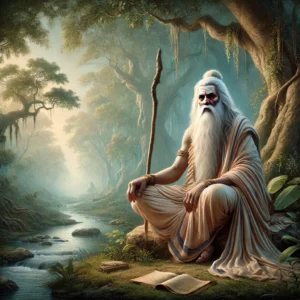
Kripacharya’s role as a warrior sage
Kripacharya’s Immortality
One of the most fascinating aspects of Kripacharya’s character is his status as a Chiranjeevi, an immortal being destined to live until the end of time. This immortality symbolizes his eternal wisdom and the everlasting relevance of his teachings. Kripacharya’s life serves as a reminder of the enduring nature of dharma and the timeless struggle between duty and morality.
His immortality also underscores the concept of eternal vigilance and the need for wise counsel in every era. Kripacharya’s presence ensures that the principles of justice, fairness, and dharma continue to guide humanity, transcending the boundaries of time and space.
Legacy and Lessons
Kripacharya’s legacy is multifaceted. He is remembered as a wise teacher, a skilled warrior, and a compassionate guide. His life offers numerous lessons in the importance of balance, impartiality, and moral integrity. In a world often divided by conflicts of interest and moral dilemmas, Kripa’s story serves as a beacon of hope and wisdom.
His neutrality in the face of intense conflict, his dedication to duty, and his role as a mentor highlight the complexities of human nature and the importance of inner strength. Kripacharya’s life teaches us that true wisdom lies in understanding the deeper truths of existence and adhering to them, even in the face of adversity.
Conclusion
Kripacharya, the everlasting warrior, embodies the essence of wisdom, duty, and impartiality. His life, marked by neutrality in the face of conflict and steadfast dedication in the aftermath, offers profound lessons in dharma and moral fortitude. His enduring legacy as an immortal sage continues to inspire and guide, reminding us of the timeless values of righteousness, wisdom, and resilience. In every era, Kripacharya remains a symbol of the eternal struggle for truth and justice, embodying the everlasting spirit of the warrior guided by dharma.
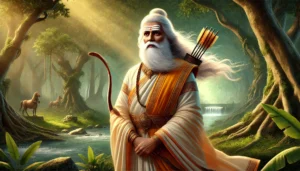
Kripacharya’s role as a warrior sage
FAQs on “Kripacharya: The Eternal Sage-Warrior – A Journey of Neutrality and Legacy”
- Who is Kripacharya?
Kripacharya, also known as Kripa, is a distinguished character in the Indian epic Mahabharata. He is revered as one of the seven Chiranjivi (immortals) and is known for his exceptional skills as a warrior and teacher. Kripacharya served as the royal preceptor of the Kuru dynasty, educating both the Kauravas and Pandavas in martial arts and statecraft.
- What is the significance of Kripacharya’s neutrality in the Mahabharata?
Kripacharya’s neutrality stands as a testament to his unwavering commitment to dharma (duty) and righteousness. Despite his allegiance to the Kauravas during the Kurukshetra War, he never displayed partiality and always acted in accordance with moral and ethical principles. His impartial stance illustrates the importance of adhering to one’s duties without personal bias, even in the face of conflicting loyalties.
- How did Kripacharya contribute to the post-war scenario?
After the devastating Kurukshetra War, Kripacharya played a vital role in stabilizing the kingdom. He became one of the trusted advisors and guardians of the young king Parikshit, the grandson of Arjuna. His guidance was instrumental in restoring order and upholding dharma in the post-war era, helping the kingdom transition from chaos to peace.
- What lessons can we learn from Kripacharya’s life?
Kripacharya’s life offers profound lessons on the importance of neutrality, wisdom, and adherence to one’s duties. His ability to navigate complex moral dilemmas with integrity and impartiality provides valuable insights into ethical decision-making. His life serves as an example of how one can uphold moral values even in challenging circumstances.
- Why is Kripacharya considered an “eternal” warrior?
Kripacharya is considered an eternal warrior because he is one of the Chiranjivi, beings destined to live until the end of the current cosmic cycle. This immortality symbolizes the timeless nature of wisdom, justice, and moral integrity. His presence in the epic serves as a reminder of the enduring relevance of these virtues.
- What role did Kripacharya play in the Mahabharata war?
Kripacharya fought on the side of the Kauravas during the Kurukshetra War. Despite his allegiance, he maintained his moral integrity and fought with honor. His role in the war exemplifies the complexity of dharma, as he remained loyal to his duties while adhering to ethical principles.
- How does the book explore Kripacharya’s character?
The book provides an in-depth exploration of Kripacharya’s character, tracing his journey from his early life and education to his role as a royal preceptor and his involvement in the Kurukshetra War. It delves into his moral dilemmas, his unwavering commitment to dharma, and his contributions to the post-war reconstruction. The narrative highlights his virtues, challenges, and the legacy he left behind.
- What makes Kripacharya’s story relevant today?
Kripacharya’s story is relevant today because it addresses universal themes such as ethical leadership, neutrality, and the pursuit of wisdom. His life offers valuable lessons on how to navigate moral and ethical challenges in personal and professional life. His story encourages readers to uphold integrity, fairness, and compassion in all aspects of life.
- Is this book suitable for readers unfamiliar with the Mahabharata?
Yes, the book is designed to be accessible to readers who may not be familiar with the Mahabharata. It provides sufficient background information about the epic and its characters, allowing readers to fully understand and appreciate Kripacharya’s story. The book serves as both an introduction to the Mahabharata and a detailed examination of one of its most intriguing characters.
- Where can I find more information about Kripacharya and the Mahabharata?
For further information, readers can explore various translations of the Mahabharata, as well as scholarly commentaries and interpretations. There are also numerous books and resources that delve into the life and teachings of Kripacharya and other key figures from the epic. This book itself offers a comprehensive examination of Kripacharya’s role within the broader context of the Mahabharata.
Summary
“Kripacharya: The Eternal Sage-Warrior – A Journey of Neutrality and Legacy” delves into the life and legacy of one of the most fascinating figures in the Mahabharata, Kripacharya. Known for his wisdom, impartiality, and martial prowess, Kripacharya’s life is a testament to the delicate balance between duty and neutrality.
The narrative explores his origins, highlighting his unique birth and early life, which set the stage for his future as a revered teacher and warrior. Kripacharya’s unwavering dedication to righteousness and knowledge earned him respect from both the Kauravas and the Pandavas, making him a rare figure who commanded universal admiration.
The book examines Kripacharya’s critical role in the Kurukshetra War, focusing on his steadfast neutrality despite the intense pressures of loyalty and familial ties. His decision to remain impartial, even in the face of immense conflict, underscores his commitment to dharma over personal alliances.
Post-war, Kripacharya’s wisdom and counsel became instrumental in guiding the next generation, as he continued to play a vital role in the rebuilding and stabilization of the kingdom. His enduring legacy as a teacher and advisor is explored in depth, emphasizing his influence on the moral and ethical framework of the time.
Through a comprehensive analysis of Kripacharya’s life, “Kripacharya: The Eternal Sage-Warrior” presents a nuanced portrait of a man whose life exemplified the highest ideals of wisdom, neutrality, and unwavering commitment to duty, leaving an indelible mark on history and mythology.
Related Articles
- Restful Nights: Ayurvedic Remedies and Traditional Indian Practices to Overcome Insomnia and Late-Night Habits
- The Tridevi: Lakshmi, Saraswati, and Parvati – Their Roles and Powers
- “Divine Creatures of Ancient Indian Scriptures: Exploring the Role of Animals in the Vedas, Puranas, and Mahabharata”
- Nature and Spirituality: Exploring the Sacred Essence of the Himalayas, Ganga, and Other Natural Wonders”
- “Reviving the Gurukul System: Relevance and Lessons for Modern Education”
- “Exploring Greek and Indian Mythology: Similarities Between Greek and Indian Mythology “
- “Embracing Sattvic Living: Harmonizing Mind, Body, and Soul Through Food and Lifestyle”
- “Charity and Prosperity: Exploring the Concept of Daan and Its Financial Relevance in Modern Life”
- How to Build an Eco-Friendly Home Inspired by Vastu Shastra
- Comparison of Ancient and Modern Sports: How Traditional Sports Have Influenced Contemporary Games
- “Timeless Lessons from Ancient Tales: Linking Samudra Manthan and Ganga’s Descent to Modern Ecological Challenges”
- “Reviving Sanskrit: How AI is Preserving Ancient Languages for the Future”
- “Mathura: The Sacred Land of Lord Krishna’s Divine Leelas”
- Investing for Future Generations: Lessons from Indian Traditions on Legacy Building and Wealth Preservation
- “Ancient Indian Wisdom: Timeless Lessons for Tackling Today’s Climate Crisis”
- “Artificial Intelligence and Spirituality: Transforming Ancient Practices for the Modern World”
- “Gold and Real Estate in India: Timeless Assets Shaping Financial Strategies”
- Tradition Meets Innovation: The Evolution of Technology in Hindu Rituals
- End-of-World Myths: Exploring Kali Yuga in Hinduism and Ragnarök in Norse Mythology
- Garuda, Pegasus, and Dragons: The Universal Ties of Mythical Beasts Across Cultures
- “Ancient Vimanas: Mythical Flying Machines or Evidence of Advanced Technology?”
- Time Travel in Hindu Mythology: The Fascinating Tales of Kakudmi and King Raivata
- “Divine Feminine Power in Hindu Mythology: The Legends of Durga, Saraswati, and Lakshmi”
- “Divine Beings of Sanatan Dharma: The Spiritual Significance of Sacred Animals in Hinduism”
- “Symbolism in Mythological Art: Unlocking Hidden Meanings in Ancient Temple Carvings”
- “Exploring Technological Advancements in Ancient India and Civilizations: Vimana, Metallurgy, & Water Management systems”
- Unveiling the Mysteries: Ancient Temples of Sanatan Dharma , Mysterious Temples of India
- “The Scientific Knowledge of Sanatan Dharma: Ancient Wisdom Meets Modern Science”
- Ancient Indian Sports and Games: Celebrating a Legacy of Skill, Strength & Strategy”
- “Exploring the Cosmic Link: The Connection Between Astronomy and Vedic Astrology”
- The Power of Sanskrit: Unlocking the Divine Language of the Gods
- “The End of Kaliyuga: A Sanatan Insight into the World’s Final Chapter”
- Explore more articles on Prachin Sanatan Yuga.
Kripacharya’s role as a warrior sage Kripacharya’s role as a warrior sage Kripacharya’s role as a warrior sage Kripacharya’s role as a warrior sage Kripacharya’s role as a warrior sage Kripacharya’s role as a warrior sage Kripacharya’s role as a warrior sage Kripacharya’s role as a warrior sage Kripacharya’s role as a warrior sage
Kripacharya’s legacy is multifaceted. He is remembered as a wise teacher, a skilled warrior, and a compassionate guide. His life offers numerous lessons in the importance of balance, impartiality, and moral integrity. In a world often divided by conflicts of interest and moral dilemmas, Kripa’s story serves as a beacon of hope and wisdom.
Kripacharya’s origins are as mystical as they are significant. Born to the sage Sharadvan and the celestial nymph Janapadi, Kripa and his sister Kripi were abandoned at birth due to their father’s ascetic duties. However, their fate took a turn when King Shantanu, while on a hunt, discovered the infants. Recognizing their divine heritage, Shantanu adopted them, ensuring they were raised in the royal court.
Kripacharya, also known simply as Kripa, holds a unique and revered position in the Mahabharata, the great Indian epic. His life, deeply intertwined with the complexities of dharma (duty), neutrality, and wisdom, provides invaluable insights into the moral and ethical dilemmas faced during times of war and peace. His enduring presence before, during, and after the Kurukshetra War exemplifies the traits of an everlasting warrior—one whose legacy transcends the battlefield.
Kripacharya, the everlasting warrior, embodies the essence of wisdom, duty, and impartiality. His life, marked by neutrality in the face of conflict and steadfast dedication in the aftermath, offers profound lessons in dharma and moral fortitude. His enduring legacy as an immortal sage continues to inspire and guide, reminding us of the timeless values of righteousness, wisdom, and resilience. In every era, Kripacharya remains a symbol of the eternal struggle for truth and justice, embodying the everlasting spirit of the warrior guided by dharma.
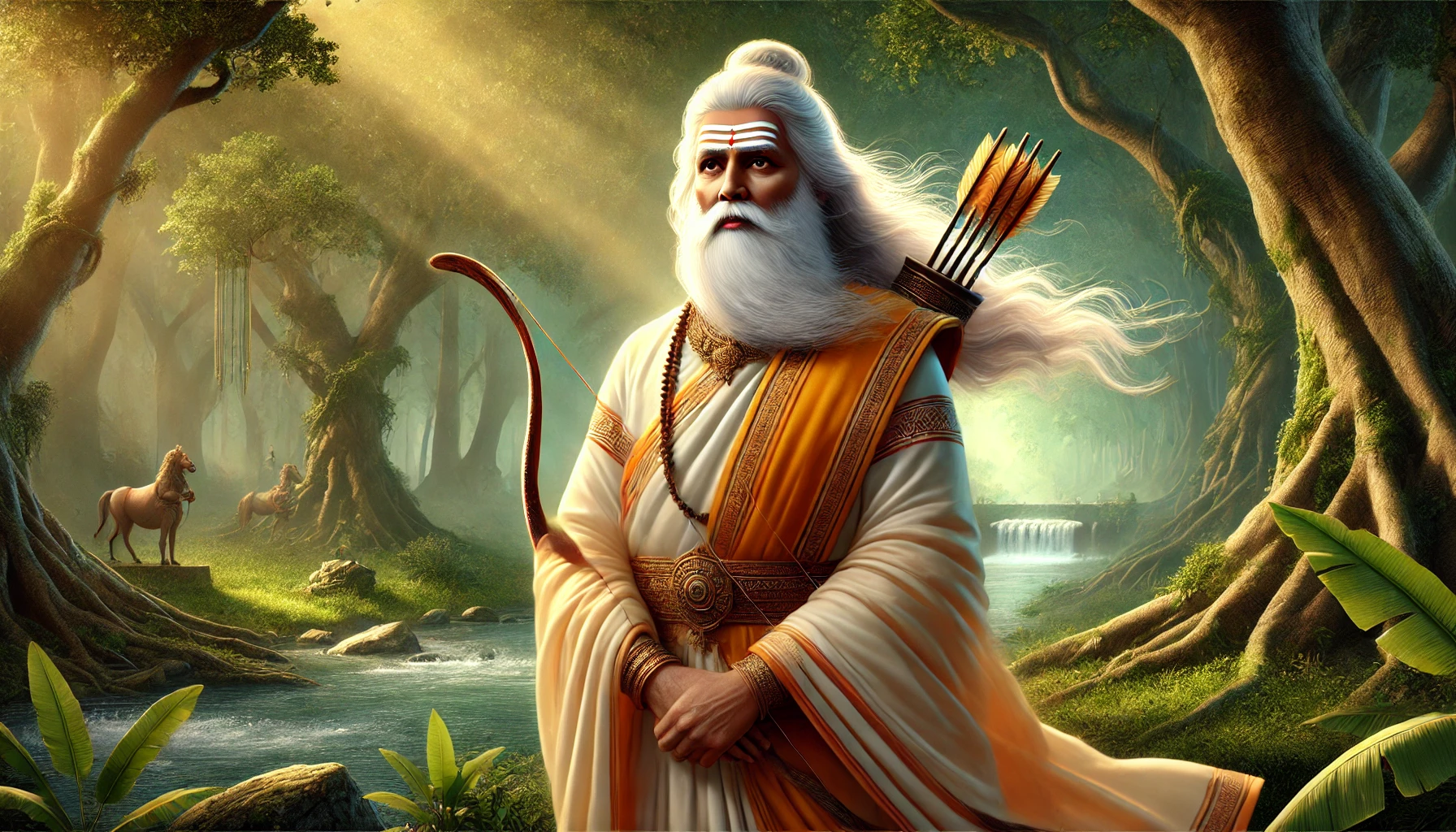
kripacharya is one of the 7 immortals , as per described in hinduism , he is still alive.
Yes, he is one of the 7 chiranjeevi